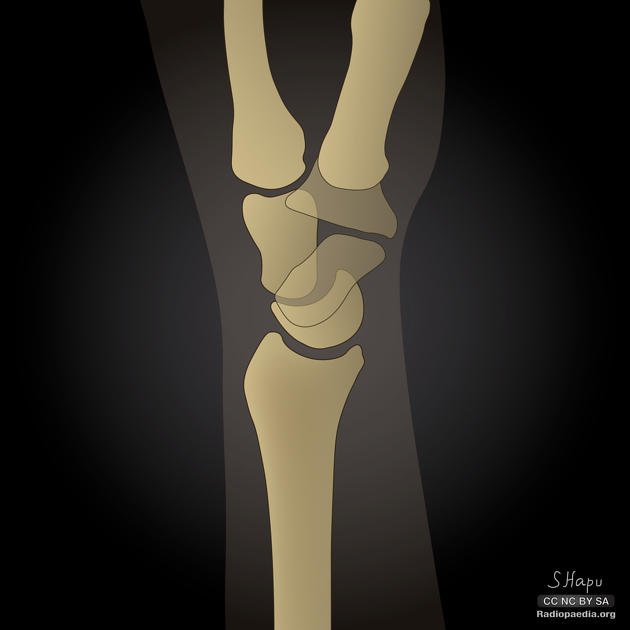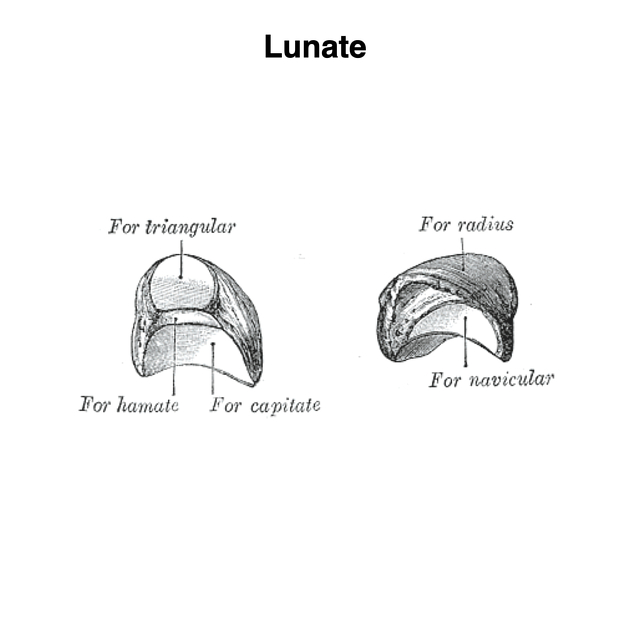Lunate

Accessory
ossicles of the wrist • Ossicles of the wrist and hand - Ganzer Fall bei Radiopaedia

Dorsal
intercalated segment instability • Dorsal and volar intercalated segmental instability and normal carpal bone anatomy (illustrations) - Ganzer Fall bei Radiopaedia

Lunate •
Lunate (Gray's illustration) - Ganzer Fall bei Radiopaedia
The lunate (os lunatum or semilunar) is one of the carpal bones and is a component of the proximal carpal row.
Gross anatomy
Osteology
The lunate is crescent-shaped with a proximal convex articular facet and a distal concave articular facet. On the medial surface is a square-shaped facet and on the lateral surface is a semilunar facet. It is broader anteriorly than it is posteriorly.
Articulations
- along with the scaphoid and triquetrum forms the distal articular surface of the radiocarpal joint
- intercarpal articulations
- scaphoid (lateral)
- capitate (distal)
- triquetrum (medial)
- hamate (distal and medial) - only in type II lunate
- articulates with the triangular fibrocartilage complex
Attachments
Musculotendinous
- nil
Ligamentous
- intrinsic ligaments
- extrinsic ligaments
- palmar: radiolunotriquetral, radioscapholunate, ulnolunate ligaments
Blood supply
- arterial supply: branches from the dorsal radiocarpal arch and dorsal intercarpal arch supply the lunate via the dorsal and palmar surfaces (80%) or palmar surface only (20%)
Variant anatomy
- variation in articular facets (see: lunate morphology)
- lunotriquetral coalition
- associated accessory ossicles
- os epilunate
- os hypotriquetrum
- os hypolunatum
- bipartite lunatum
Radiographic appearance
Plain radiograph
- frontal projection (neutral wrist position)
- more than one-half should contact distal radial articular surface
- should have a 'square shape' and the intercarpal joints should be uniformly 1-2 mm wide
- forms part of the carpal arcs
Development
Ossification
Ossifcation typically begins at age four and is complete by age six or seven .
History and etymology
From the Latin "luna" meaning moon, referring to the crescent-moon shape of the lunate. It was first named the "lunatum" in 1653 by Lyser, and has also been termed the "lunare" or "semilunare".
Related pathology

